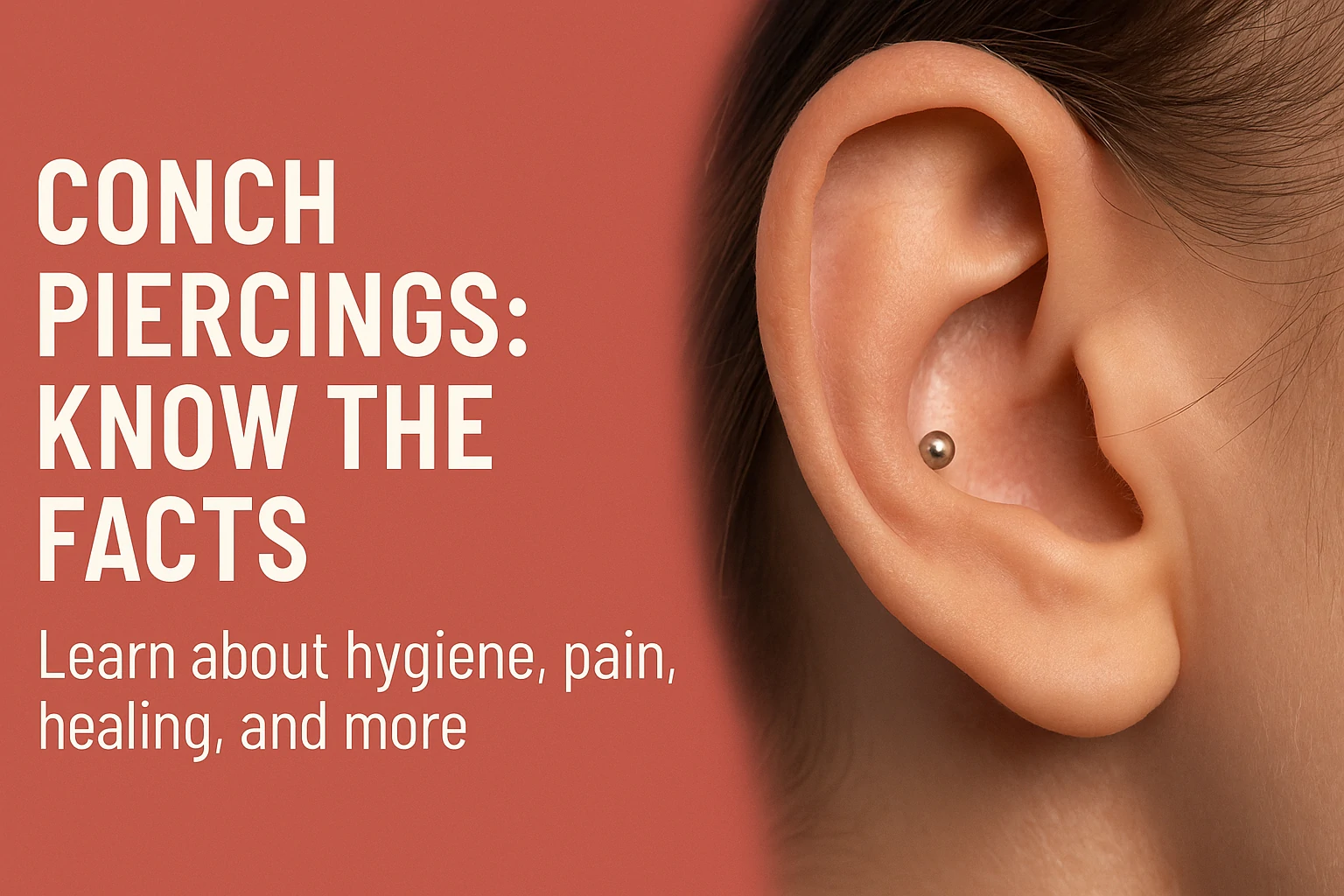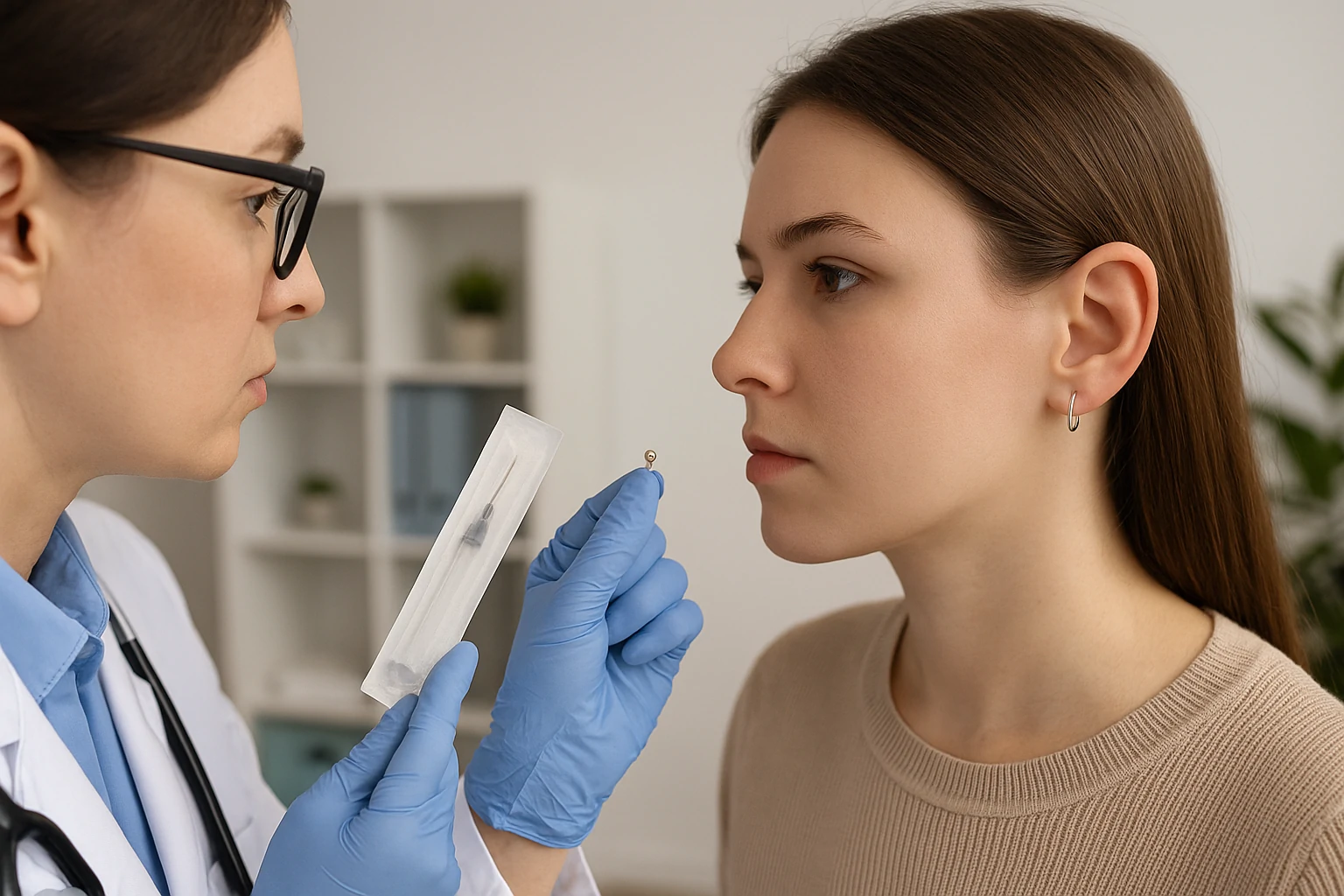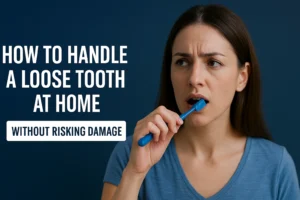Conch piercings get more popular every year. People like the bold look. This piercing stands out. It adds style to your ear. But you should learn the facts before doing it.
This is not the same as a lobe piercing. It goes through thick cartilage. That means more pain. It also takes longer to heal. The risk of problems is higher. Some people decide too fast. They do not know the dangers. That can lead to swelling, pain, or infection.
Doctors often see the damage. They treat infections. They see jewelry stuck in sore ears, They know what happens when you skip care and That is why doctors warn people, They want you to stay safe.
This guide shares what doctors say about conch piercings. It covers hygiene, pain, healing time, and smart care steps. Use it before and after the piercing.
What Is a Conch Piercing?
A conch piercing goes through the center part of your ear. That part is called the concha. There are two types. One goes through the inner part near the canal. The other goes through the outer shell.
You can wear a hoop, bar, or stud. The style depends on the spot. Most studios use a hollow needle. A needle is clean and safe. Guns are not safe. They crush cartilage and raise risks. Doctors say use a needle, not a gun.
What Doctors Say About Hygiene
Doctors say keep your ear clean. Infections come from dirt and bad habits. Start clean and stay clean.
Use saline spray two or three times each day. Do not touch your ear with dirty hands. Do not twist the jewelry. Do not sleep on the pierced side.
Avoid harsh products like alcohol or peroxide. These dry out your skin. They slow healing. Use only sterile saline spray.
Do not go into pools, lakes, or tubs for four weeks. Water can carry bacteria. That can infect the new hole. Doctors say this is a common cause of early problems.
Uvlack and Your Health: What Happens When You Avoid the Sun
How Much Does It Hurt?
This piercing hurts more than a lobe piercing. Cartilage has fewer blood vessels. It heals slow and holds pain longer.
You may feel a sharp pinch. Some feel a deep push. Afterward, your ear may feel sore. The pain may last days or weeks. Swelling is also common.
If pain stays, it may mean trouble. Doctors see this with poor care or cheap jewelry. Use titanium or gold. These are safe metals.
What Is the Healing Time?
Doctors say healing takes six to twelve months. That depends on your health, care, and jewelry. The hole may look fine in weeks. But the inside stays raw for months.
Do not switch jewelry too soon. Many people do. That can cause pain or trauma. Wait at least six months. Ask a pro before making changes.
If swelling goes down, crust fades, and pain stops, healing has started. But full healing takes time.
Common Risks Doctors See
Infection is the top risk. Doctors treat red, swollen, leaking ears every day. These cases need fast care.
Keloids are thick scars. They grow around piercings. Some people get them more than others. Ask a doctor if you had keloids before.
Jewelry rejection can happen. The body pushes the metal out. That can leave scars. Cheap metal raises this risk.
Other risks include allergic reactions, bumps, or pus pockets. These come from poor cleaning or touching the piercing.
What Doctors Suggest Before You Get One
Pick a safe place. Choose a studio that uses gloves and sterile tools. Ask about their cleaning steps. Look at reviews.
Ask about their tools. Do not let them use a gun. That tool causes more damage. Doctors say guns increase scars and infections.
Use quality jewelry. Choose titanium, gold, or surgical steel. Avoid nickel and cheap items. They can cause rash or pain.
Know your skin. If you get reactions or heal slow, talk to a doctor. Not every ear is good for cartilage piercings.
What Doctors Advise After the Piercing
Stick to a simple care plan. Spray saline two or three times each day. Do not use creams, oils, or home tricks. These do not help.
Keep your hands off the piercing. If you must touch it, wash your hands first. Never twist the jewelry.
Sleep on the other side. Use a donut pillow or neck pillow to avoid pressure.
Avoid dirty water. Stay out of hot tubs, lakes, and pools.
Keep phones, makeup, and hair away from the ear. These carry germs.
When to Call a Doctor
See a doctor if your ear looks red, leaks pus, or feels hot. A fever is a big sign. Get help fast.
Do not wait. Small infections can get worse. You may need medicine. In rare cases, the infection spreads to the bone.
If jewelry gets stuck, do not pull it. That tears the skin. Let a pro remove it safely.
What If You Want to Remove the Piercing?
If you change your mind, go to a pro. Do not pull out the jewelry yourself. That causes tears and scars.
Once it is out, clean the area. Keep it dry. Some holes close fast. Others stay open. If you had swelling or a bump, use cream. Doctors may suggest medicine to reduce marks.
Final Thoughts
A conch piercing adds bold style to your look. It stands out and draws attention. But beauty should never come before safety. This type of piercing goes through thick cartilage. That means it needs more care and more time to heal. You cannot treat it like a basic lobe piercing. The risks are real.
Doctors see the results when people ignore good care. They treat painful infections. They remove jewelry stuck inside swollen ears. They help with scarring and bumps that form after poor hygiene. Many of these problems could be avoided with simple steps. That is why medical advice matters.
You must stay alert. Pick a clean and trusted studio. Ask about tools and jewelry. Say no to piercing guns. Say yes to titanium or solid gold. Do not rush into it just because it looks cool. Your health matters more than a trend.
Once you get the piercing, follow the care plan. Clean it with saline. Keep your hands off. Sleep on the other side. Stay away from pools and dirty water. These steps may sound small, but they make a big difference.
If you notice redness, pain, or pus, act fast. Do not wait for it to go away. Call a doctor or your piercer. Early care prevents bigger problems. If you feel unsure, ask questions. You do not need to guess when help is out there.
Your ear is part of your body. It needs protection like any other part. A fresh piercing can stay safe if you stay smart. Keep it clean. Keep it simple. Protect your look without harming your health.
If your skin reacts or stays sore after the piercing, read our SkinPres T User Guide: Benefits, Side Effects, and How to Use It Right to learn how it may help support healing.
Common Questions
| Question | Answer |
|---|---|
| How long does a conch piercing take to heal? | It takes six to twelve months to fully heal. |
| Does a conch piercing hurt more than a lobe piercing? | Yes. Cartilage piercings usually hurt more and heal slower. |
| Can I clean a conch piercing with alcohol or peroxide? | No. Use only sterile saline spray. Alcohol and peroxide harm the skin. |
| When should I see a doctor for a conch piercing? | If you see redness, pus, swelling, or feel pain and fever. |
| Can I swim after getting a conch piercing? | No. Stay out of pools, lakes, and tubs for at least four weeks. |
| What kind of jewelry is safest for a conch piercing? | Use titanium, solid gold, or surgical steel. Avoid cheap metal. |





